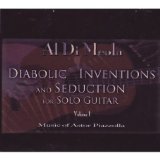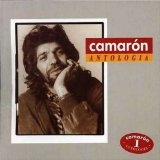Lesson Twelve
Subjects Covered - Lesson 12
- Chords
- Bar chords and the blues
- Scales
- Following the chords with the blues scale
- Musicality
- Building blues riffs
- Exercises
- Shifting positions on the neck with the pentatonic scale
The main points for this whole course are
- keep your hands relaxed
- keep your guitar in tune
- play in time, with the rhythm
- musicality always beats technicality
- practice too slow instead of too fast
- play along to records whenever you can
- play with other people whenever you can
Bar chords and the blues in G
Points to remember
- find the ideal place to put your left-hand thumb when you are making a bar chord
- do bar chords a little bit at a time - do not push it
- memorize the blues progression
- play in time
What makes up a blues?
12 bars
There are many answers to what makes up a blues. Here we talk about the chords that make up a blues. There are plenty of different ways to play the blues. Like we mentioned before, a blues usually is 12 or 16 bars long. Here we'll use 12 bar blues.
The first four bars
This is where the verse starts. It's the start of the cycle. If it's blues in G, the first measure will be a G chord. A lot of times all four bars will be same chord. If someone is singing it's the part where they usually set up the verse, like: "Well I loved my baby from way down in New Orleans".
The middle four bars
The 5th bar goes up to another chord. If it's a G blues, then the chord on the 5th bar will be a C. It usually stays that way, then goes back to G for 7th and 8th bars. There's a bit of tension in the 5th and 6th bars that gets released in the 7th and 8th bars. This part would be something like: "You know she left me for a good-for-nothing man."
The last four bars
This is the end of the verse and sets up all the tension that's resolved at the beginning of the next chorus. If it's a blues in G, this is where the D chord will turn up. The D is found a lot of times on the 9th and 12th bars. The singer would sing something like this: "But her sister and I got along real fine".
The turnaround
The turnaround is usually the last 2 bars of a 12 bar blues. One of the instruments will play a riff that brings it back to the top. We'll talk about this in later lessons.
Blues progressions
A real simple blues
| G | G | G | G |
| C | C | G | G |
| D | D | D | D |
You can see the last four bars is D | D | D | D. The D chord provides the tension that is resolved when you get back to the G chord at the top of the form. It's a pretty simple blues but it works. People don't play this that often, it's more for demostration purposes.
A simple blues
| G | G | G | G |
| C | C | G | G |
| D | C | G | D |
People play this a lot. You can put bread on the table with this one. It's a very common last four bars - D | C | G | D .
A new chord form
You can use any G, C, D chords you want, but some will sound better. You can play the blues with all the different chords you've learned so far, especially from lesson 6 and 11.
Based on the bar chord
We are going to build on the bar chords that we used in the lesson 11. In the future we are going to be creating all sorts of chords based on the bar chord form we learned in lesson 11. As you can see, it's just like the bar chords in lesson 11 except that the pinky finger isn't playing anything.
|
|
||
|
Musicality
Following the chords with the blues scale
Find the fret where you are making the bar chord. Now play the pentatonic minor and/or blues scale from that spot. Change to the next bar chord and do the same thing. It's like what we did lesson 11 but now your are doing it with the blues.
The low-down
Pick a simple riff from the blues scale on the 3rd fret that is four beats long. Now play the riff up at the next spot (the 8th fret). Then play it at the next chord (10th fret). Then play it back at the C chord (8th fret). Now play the chords once through. Then play another riff and repeat. Remember to keep things simple and keep the beat going.
Music first
When you are doing this type of soloing it is easy to get caught up in the technical aspect. Remember to keep your musical ideas first.
Exercises
Play the minor pentatonic scale pattern on the third fret for a bar (4 beats). Then on the 8th fret for a bar. Then on the 10th fret for a bar. Then on the 8th fret.
Don't forget!
- Play slowly and in time!
- Miss notes not the beat (a missed note is no big deal but a missed beat is!)













